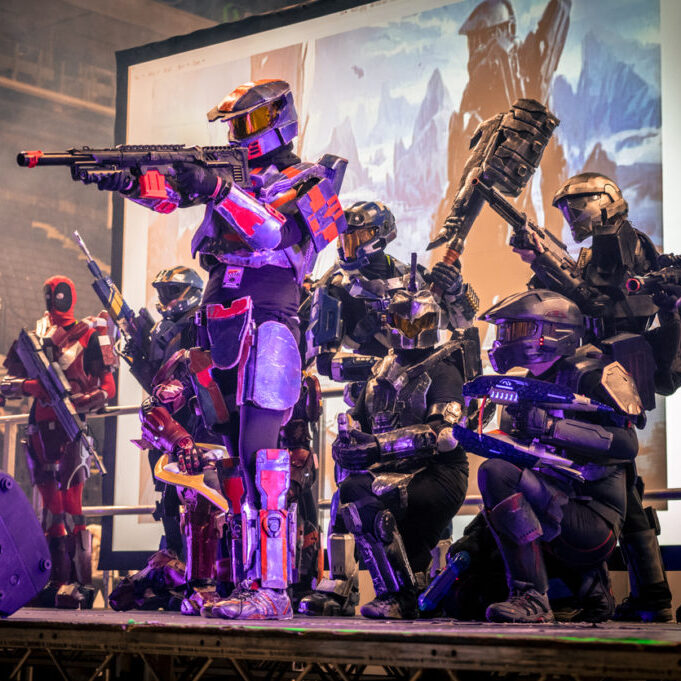Insights < BACK TO ALL INSIGHTS
Ifrah Law At NFT.NYC: Insights and Discussions on NFT Gaming
Ifrah Law At NFT.NYC: Insights and Discussions on NFT Gaming
By: Jake Gray
In the third year following its inaugural event in 2019, NFT.NYC held its NFT.NYC conference from June 20th to June 23rd, 2022. And Ifrah Law was in attendance, alongside more than 15,000 other attendees in addition to the conference’s 1,500 speakers.
Featuring educational programming and informational panels about various NFT-related topics across seven different venues surrounding Times Square, NFT.NYC hosted one and a half days worth of discussions on NFTs and gaming, an issue directly under the purview of Ifrah Law’s expertise in internet-Gaming and online entertainment regulations. Many of the discussions gravitated toward a few central topics in the gaming category—for instance, product building, monetization methods, and acquiring new players as well as retaining existing ones.
Crypto-Winter Optimism
On the topic of product building, several panelists expressed optimism about the potential silver lining of the current “Crypto Winter,” which was forecasted earlier in the year pending fears of a global recession and which came into full effect in the week preceding NFT.NYC. In particular, the crypto-recession brings with it a changed market attitude, one devoid of the former restless hype and pressure to push out the newest, hottest product to meet the demand of the NFT craze. Whenever the NFT market is “bullish,” projects must devote much of their attention to daily community engagement and interaction, otherwise bored consumers will jump ship to another, more “hype-worthy” product at a moment’s notice since so many are available. In other words, “content droughts can be catastrophic,” as one panelist noted.
Generally, such pressure in the NFT market can come at the cost of intense developmental focus, leaving many products unrefined, unfinished, or simply not well thought out, because the point becomes not to build a great product but to simply meet the high demand while it lasts and hope it sticks. So, despite the falling prices and engagement, many panelists were looking forward to a change in pace—the ability to work more thoughtfully and methodically. Further, while many projects will collapse (or already have) as a result of the crypto-winter, the same silver lining exists for wannabe newcomers to the space. Lower competition, lower prices, and lower demand mean an excellent opportunity in the market to focus on establishing a polished product for when the market recovers.
The Play-to-Earn Game Model and Player Numbers
Methods for monetization were naturally a central talking point at NFT.NYC’s gaming talks, as the manner in which NFT games generate revenue and the manner in which video games as we typically think of them generate revenue are far different. The latter category, which we will call web2 video games, generates revenue in a few ways typically: one-time sale purchases, micro-transactions, or subscriptions. Their game models can vary from freemium to premium-priced or even pay-to-win. [1] Web3 video game revenue strategies, on the other hand, include NFT sales, royalties from NFT sales, and verticalized marketplaces, from which consumers are offered utility, real-life or otherwise, rather than purely cosmetic or gameplay-related features. Such utility offered by means of NFT ownership leads to the play-to-earn game model, in which NFT owners can utilize their assets to earn money by means of in-game mechanisms and market strategy. This feature is an innovation to the video-game industry and has been a main attraction for players in the early stages of the NFT video game market.
However, a few of the discussions revealed a passing skepticism about the efficacy of the model in the long term. Panelists’ concerns coalesced around two central notions: that the high cost of NFTs, which function as in-game items, can transform NFT play-to-earn games into pay-to-earn or pay-to-win, and that the focus on utility and earning can turn the projects less into games and more into work, both points which are related to acquiring new and retaining existing players, our third central topic.
With respect to pay-to-earn and pay-to-win, several panelists expressed that their concerns stem from the high cost of entry of some NFT games. As referenced above, in web2, games are usually either free-to-play with optional microtransactions, or premium-priced/subscription-based, with basic starting costs typically amounting to no more than $60-$100. In contrast, some NFT games can cost users hundreds of dollars, and sometimes over $1,000 just to get started, with costs variable on the extent to which the player is committed to actually making progress. [2] Whenever in-game items are available for purchase, whether for money or an in-game currency, the price of the item is usually proportional to how “good” or “rare” it is in the game. But when in-game items are purchased with real-world money, like with NFTs, the more real-life money one has to throw at the game, the better one will do. So, if the earning features and win conditions of the game are tied to performance, which is itself tied to a dollar investment amount, then the game becomes about wealth rather than fun or skill. Such high real-world costs are likely to deter new users from even considering the game let alone playing it.
While the play-to-earn model has always been used by players in online multi-player video game environments, usually through third-party websites that violate the game’s terms of service, the model has never been so purposefully fundamental to game design and widespread as it has been in the NFT space. We mentioned in our “Ifrah Law on NFT” blog series that companies like World of Warcraft (WoW) creator Blizzard Entertainment have historically actively sought to combat gold farming practices and other play-to-earn tactics, but blockchain-based game creators often specify that the external trading of game NFTs is not a violation of their terms of service. Indeed, the practice is encouraged and integral to the game model and the project’s revenue model. One panelist put the issue well: “what if all the players in our games are WoW gold farmers trying to sell to each other? This might be the sort of environment we are creating inadvertently, one that might not be fun apart from the making money part of it. What we need are fun games to attract new players and a lot of projects forget to build genuine games around their play-to-earn. No one wants to play a game that is just like a job. We don’t want games as jobs because that’s not a game anymore.”
NFT Ownership
This point also invokes the way in which some NFT games and projects instantiate a sense of co-ownership and thus a sense of responsibility in those who own the project’s digital assets. Especially with governance tokens, which lets participants vote on the project’s initiatives, consumers are increasingly willing to invest their own time, energy, and money to grow projects and games, even when not specifically employed to do so. Indeed, this is so because of the extent to which an NFT game’s growth can grow the wealth of those who already own the project’s NFTs.
Such ownership(-like) features have undoubtedly generated immense value for not only developers but also players, as it rewards individuals for what they invest, whether it be their money, time, or energy. Each player of a game grows and generates value for the game they play by the mere fact that they play it and blockchain-based video games duly reward players for their efforts. In any case, however, across the various panel discussions and talks, there was an underlying consensus that a balance must be struck between web3 incentivization methods and web2 game designs in order to keep games what they should be: fun.
Conclusion
Implicit in such discourse is the broader concern of how to keep the NFT gaming space alive and healthy, especially in the fallout of the crypto-winter, which will, and perhaps already has, induce many projects in the larger blockchain-based industry to close their doors. The size and scale of next year’s NFT.NYC may prove a useful indicator of the NFT industry’s ability to recover, and thus, proliferate out of its nascent stages. Indeed, while the number of businesses in the space will dwindle, this may be an omen of a healthier, less saturated NFT market that can thrive on the efficacy, rather than the hype, of its products.
[1] For more information, see: https://en.wikipedia.org/wiki/Free-to-play
[2] https://www.brookings.edu/techstream/addressing-the-policy-challenges-raised-by-nft-gaming/.





